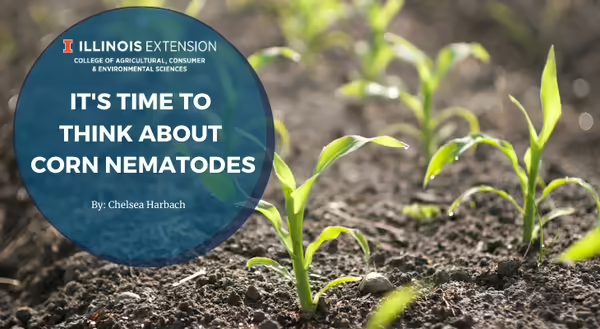
The spring 2020 planting season season is moving right along, and as such, fields all over the state have great corn seedlings up and thriving. With the emergence of the new crop comes all of the concerns and worries that farmers must contend with throughout the growing season. Among those concerns should be corn nematodes.
Corn nematodes can cause some devastating yield loss. Among the nematodes that are known to cause yield suppression in Illinois are lance nematode (Hopolaimus geleatus), needle nematode (Longidorus breviannulatus), lesion nematodes (Pratylenchus spp.), and dagger nematode (Xiphinema americanum). While there are no recent estimates of the amount of economic losses due to yield suppression by corn nematodes, a 1994 study estimated $81 million dollars lost as a result of corn nematodes in Illinois alone.
The last corn nematode survey to take place in Illinois was conducted in 2008 and 2009. Results from that survey showed that two thirds of the fields that were sampled had lesion nematode population densities that were high enough to be at risk for yield suppression. Other corn nematodes that were often found in the survey included spiral nematode (Helicotylenchus spp.), lesion nematode, stunt nematode (Tylenchorhynchus spp.), and lance nematode.
With over a decade passed since the last survey, Dr. Nathan Kleczewski (Extension Field Crops Pathologist & Assistant Professor, Dept. of Crop Sciences) has initiated a new survey of corn nematodes in the state. And now is the time to think about contacting your local Commercial Ag Extension Educator about sampling!
The optimal time to sample for corn nematodes is when corn seedlings are between V4 and V6. The goal is to have 1-2 fields per county sampled to assess corn nematode populations across the state. Soil samples will be processed at no cost to the grower.
If you are interested in be a part of this survey, please contact Dr. Kleczewski: nathank@illinois.edu or myself: harbach2@illinois.edu.